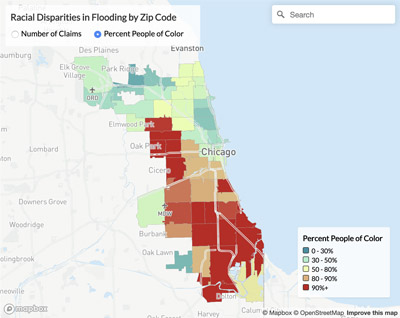For the average household, transportation is the second-highest expense after housing. In large, dense cities, public transit availability can dramatically decrease transportation costs. But what about smaller places – quiet suburbs, rural communities, regional centers – that don’t have the same level of public transit service? How can leaders in these communities find ways to reduce transportation costs to help low- and middle-income residents get ahead?
A recent HUD publication provides some answers. Written for local decision makers, the guide discusses housing and transportation challenges unique to cities with populations under 250,000, and offers advice for cost-effectively making small cities more walkable, equitable, and connected.

CNT contributed analysis of housing and transportation costs to the report via case studies of five cities: Gonzales, CA; Traverse City, MI; Lake Worth, FL; Portland, ME and Lakewood, CO. CNT also examined whether Low Income Housing Tax Credits had been invested in location-efficient neighborhoods. Although these places range from small towns to inner ring suburbs with differently sized transit systems, they all possess the assets for transportation affordability. For example, in Portland, Maine, combined housing and transportation costs are lowest in its historic Downtown, where over a third of commuters walk to work. 20 out of the city’s 24 Low Income Housing Tax Credit projects have been cited there; at one of these developments, 43% of residents walk to work.

These places – and many other small and mid-sized communities like them – share assets for transportation affordability, like walkable neighborhoods, job centers, and other destinations. But they also must acknowledge their limited transit infrastructure, municipal staff capacity, and available funds for large-scale projects. The guide offers these communities replicable and cost-effective policy strategies to deliver affordable housing in communities where households can own fewer cars and/or use transit to get to jobs. It recommends five general strategies to maximize small cities’ often limited financial and staffing resources:
- Convene decision makers to ensure different departments have shared goals for housing and transportation decisions and to make integrated planning “business as usual.”
- Provide multiple transportation options designed to help low- and moderate-income residents access jobs, schools, parks, and other daily destinations.
- Promote accessible affordable housing in connected communities, prioritizing walkable neighborhoods with access to diverse transit options.
- Support established neighborhoods with compact development patterns, and connect municipal economic development strategy with transportation planning.
- Refocus financial resources to improve the alignment of housing and transportation investment goals.
Employing the strategies outlined in the guide can help small and mid-sized cities rethink their current housing and transportation policies to make neighborhoods more connected and affordable. CNT continues to research and advocate tools and solutions, like our Housing and Transportation (H+T®) Affordability Index, that can be used to make cities of all sizes more economically prosperous and environmentally sustainable.





 Strengthening Transit Through Community Partnerships
Strengthening Transit Through Community Partnerships